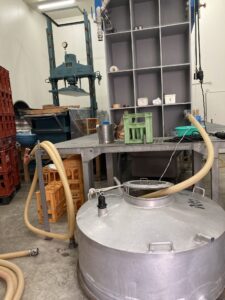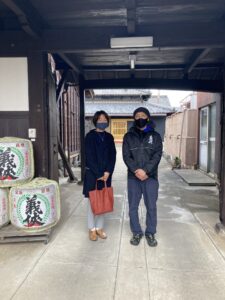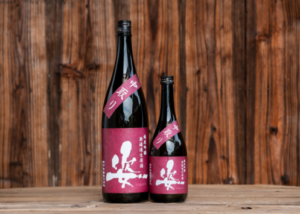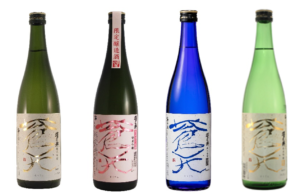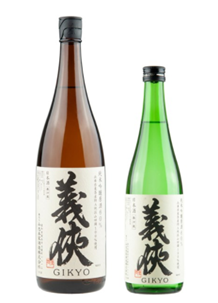
GIKYO is brewed in Aisai City, Aichi Prefecture.
Where GIKYO came from
In the Meiji Era, the Yamachu Honke Sake Brewery was engaged in business under an annual contract with a sake retailer. The brewery received orders in advance and made sake based on the quantity ordered, but one day the price of sake skyrocketed.
However, the brewery kept its original contract and continued to provide sake without regard to profitability, and the retailer gave the brewery the name "Gikyo" (meaning "chivalry" in Japanese) because they believed that this was the sake of real "giri ・義理(courtesy)” and “ninkyo・任侠(chivalry)”. This was the beginning of the sake, "GIKYO”.
The word "Gikyo" means to be righteous; to oppose the strong and help the weak. True to its name, the Yamachu Honke is still doing business with this perspective.
The GIKYO Series
There are several Kanji character series in GIKYO, some of which are extremely difficult to read even for Japanese people. Learn the meaning here to enjoy GIKYO from a new perspective.
Keep in mind that all the typefaces including GIKYO were written by the mother of the brewery president (Mr. Masahiro Yamada), who is a certified master calligrapher.
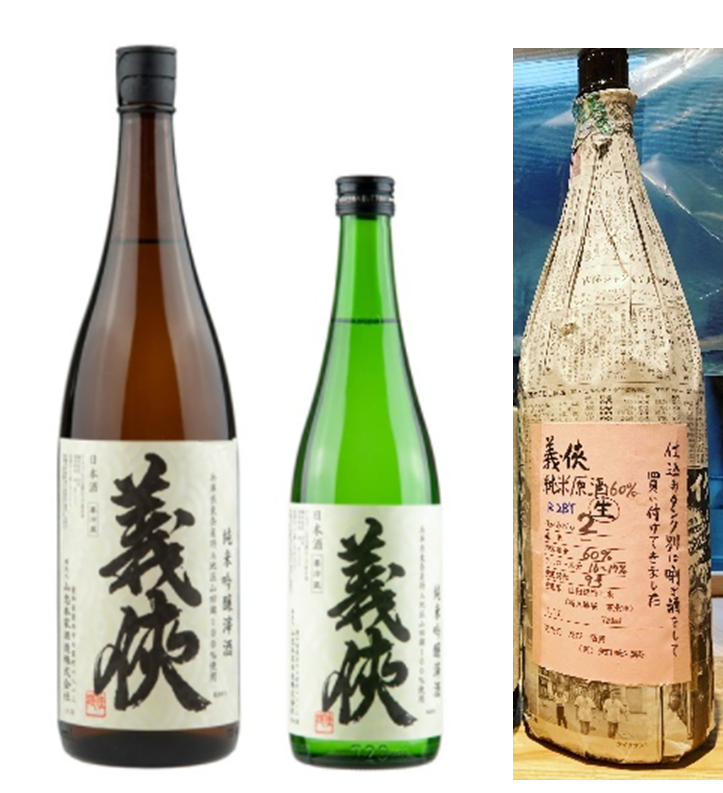
GIKYO: 義侠
This is a representative brand mainly made from Yamada-nishiki*1 produced in Tojo, Hyogo Prefecture.
Except for the boxed product described below, all "GIKYO" is wrapped in newspaper, as shown in the photo on the right. This was devised to prevent the deterioration of sake quality at a time when refrigerated trucks were not yet available for distribution. They have not changed this style even today, including for their export products. They are also very careful about the contents of the newspaper articles used for wrapping, for example, not using those that contain serious incidents or tragic accidents, as they want to keep the experience of sake drinking positive.
Note 1: Yamada-Nishiki is the rice mainly used for sake brewing, and is known as the "king of sake rice". Among them, Yamada-Nishiki grown in the Tojo district of Hyogo Prefecture, recognized as a "Special A" area, is highly regarded by sake brewers nationwide as the highest quality sake brewing rice. It was registered as a trademark in 2009.
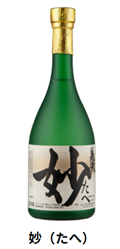
GIKYO – TAE: 義侠:妙(たへ)
To name this sake, they took one Kanji “妙・Tae” from “妙なる調べ・Tae-naru Shirabe”, meaning “enchanting melody”.
The adjective TAE (妙なる・Tae-naru) expresses the appearance of being mysteriously excellent, or indescribably beautiful.
This sake is a blend of Junmai Daiginjo Nakadori, brewed with up to 30% polished Yamada-nishiki produced in Tojo Special A district, Hyogo Prefecture, and aged for at least five years.
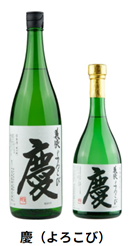
GIKYO – YOROKOBI: 義侠:慶(よろこび)
“Yorokobu” in Japanese means “be happy” or “be delighted”. Kanji “喜ぶ“ is generally used, but here the kanji “慶ぶ” is used.
The difference between the two is that while the former is used for an everyday emotion, the latter is used for an expression used in celebratory events such as weddings.
It is said to be used when not only you but also those around you feel happy, so it seems a perfect name for a brand of aged sake blends, next to TAE.
It is a rare sake that is only shipped once a year in November, and is completely made to order for distributors nationwide.
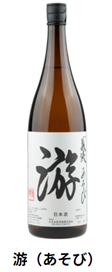
GIKYO – ASOBI: 義侠:游(あそび)
Here again, you will see a trick in Kanji. The Kanji for "asobi: play" that is often seen is "遊" with a radical Shin-nyo, but a radical Sanzui is used here.
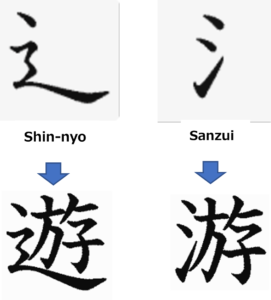
Both read “asobu(あそぶ)” meaning something moves freely, but the difference is while the former goes on the "road", the latter goes on the "water".
The sake uses water for brewing, so they played with the naming of the sake to reflect that.
It is a multi-year blend of 40% polished rice and 50% polished rice.
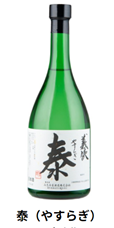
GIKYO – YASURAGI: 義侠:泰(やすらぎ)
To name this sake, they took one Kanji “泰” from “天下泰平-Tenka-Taihei” meaning “universal peace”. It reads “yasuragi”. It may be what is required in today's world*2.
This is a blend of junmai ginjo-genshu (40% polished rice) cold-aged sake.
Note 2:During the writing of this article (March 2022), the Russian invasion of Ukraine was underway.
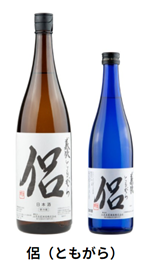
GIKYO – TOMOGARA: 義侠:侶(ともがら)
The name for this sake is taken from the word "hanryo(伴侶)," which means "companion," "partner," or "friend”. It is read as "tomogara”,
and is intended to be a long-lasting companion for life.
The alcohol content is lower than other brands at 13~14 percent, so it can be served a little lighter.
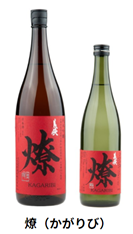
GIKYO – KAGARIBI: 義侠:燎(かがりび)
The rice used for this sake is Yamada-nishiki from the Tojo Special A district of Hyogo Prefecture, but the sake is made with specially cultivated rice, reducing the use of agricultural chemicals.
A Kanji was taken from the word "Seika-ryogen 星火燎原(せいかりょうげん)" meaning that something small as the light of a star at first will eventually grow and become powerful enough to burn down a wide field.
You can imagine it as an analogy for how a sip of sake spreads throughout your body. It is the only red label in the "GIKYO" series.
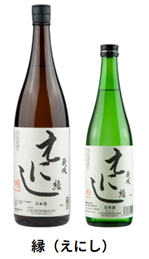
GIKYO – ENISHI: 義侠:縁(えにし)
This sake is written as “en(縁・えん)” and reads “enishi” meaning connection, bond, tie, or fate. Wouldn’t it be nice if this sake could be a trigger to create a connection?
It is a sake that has been aged at room temperature for more than 3 years in the brewery.
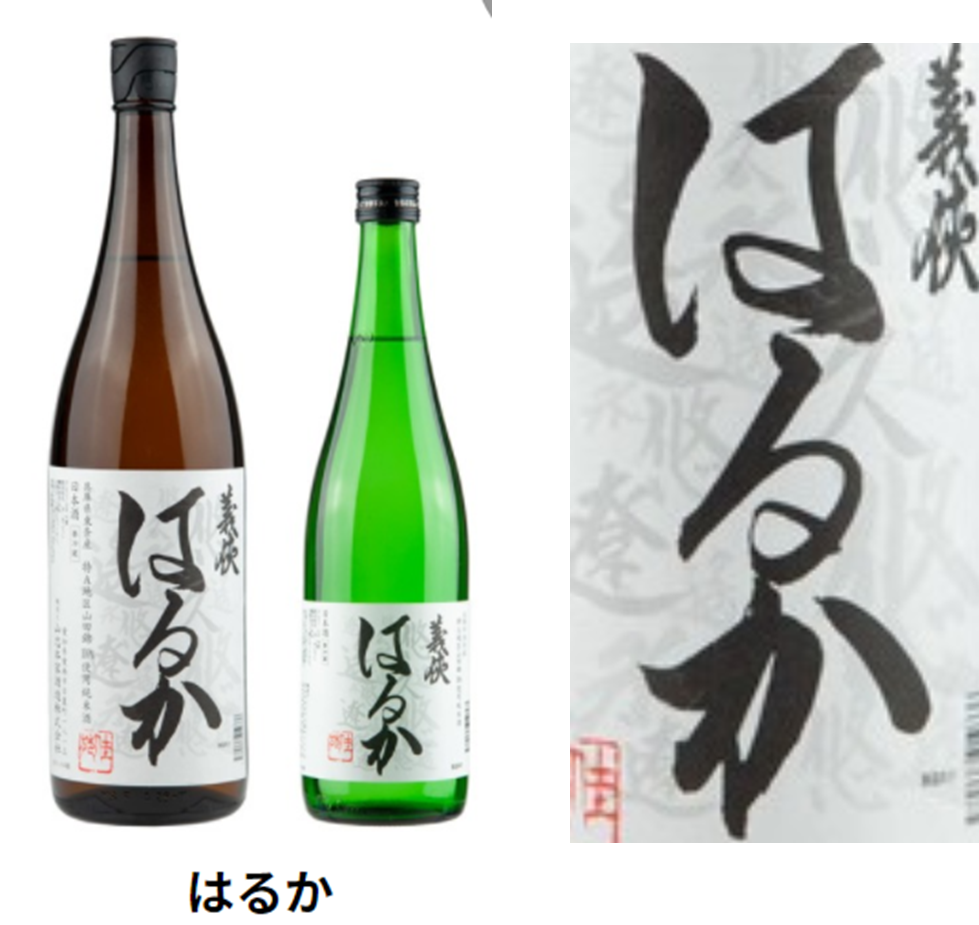
GIKYO – HARUKA: 義侠:はるか
This edition was brewed as a sake that can be enjoyed light and slowly to relax over a long period.
In the background of the word “Haruka", meaning “far” or "long period of time", you will see the Kanji of “遥 (haruka)” and “悠久 (yukyu)” sharing the meaning of HARUKA, elaborately printed in light black ink.
Ref: Shogakukan Digital Dictionary
Trans Biz https://biz.trans-suite.jp
Kojien 7th edition
About Yamachu Honke Shuzou Co., Ltd.
History
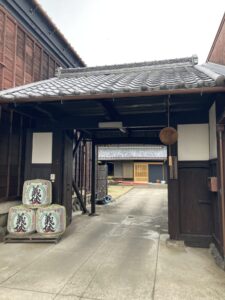
Founded in the mid-Edo period.
In the early days, the sake was sold as "Yamachu's sake," with no name. The time was harsh for brewers as there was no liquor regulation, so retailers could do anything they wanted, such as diluting the sake to increase the quantity*3.
Although the production volume once reached 7,000 koku (over 1.2 mil liters), 90% of which was allocated for Nada’s sake*4 brewery on consignment.
However, the 10th head of the family, Mr. Akihiro Yamada, decided to discontinue all contracts with Nada breweries in order to "give back to the local community by making sake that is rooted in the local community." To do so, he decided to produce GIKYO only. The current head and the 11th generation, Mr. Masahiro Yamada, has since become the successor.
Note 3:The sake was so diluted that it was sometimes called "goldfish sake," which was said to be watered down so much that goldfish could swim in it.
Note 4:Sake produced in Nada, an area between Kobe City and Nishinomiya City in Hyogo Prefecture. Nada boasts the largest production and sales of sake in Japan by far.
During the Edo period (1603-1867), the population of Edo (present-day Tokyo) grew rapidly, and demand for sake soared along with it. Merchants who saw a commercial opportunity in this situation began full-scale sake brewing in the area.
How Mr. Masahiro Yamada, the 11th generation, became the successor of GIKYO
Born as a boy in a brewery, it was natural that he would be expected by his parents to be the successor. However, neither the eldest nor the second son (the current 11th generation) was ever asked to take over. "Go to the university of your choice and do what you want,” was what the tenth generation always used to say.
So, Mr. Yamada went on to college to study, having no connection to sake brewing. But when he looked around the world, he found that all he saw were "uncool" adults. He then asked himself what a "cool adult" would be, and realized his answer would be his father, and therefore returned to his hometown.
But he was not yet immediately accepted by his father. To prove himself, he pursued job hunting at a general company and worked for 3 years at a small business, both irrelevant to brewing. The common sense and the social skills being thoroughly cemented in him in this period, he finally became involved in the brewing business of GIKYO.
Sake is a luxury item. He went on to learn sake brewing from the 10th generation under the premise that there is no right answer in brewing luxury items. He learned the importance of grasping the taste and nuance of sake rather than gaining knowledge alone.
However, sake brewing is not something that can be achieved by the toji (brew master) alone, is what Mr. Yamada believes. So, he places much value in the values of teamwork, based on an environment where all staff members can share the workload and easily express their opinions. For this reason, Mr. Yamada does not play a role of toji, but as a representative of the GIKYO team. He supports the team with another staff member, the production manager.
The reason Yamachu Honke sells GIKYO to retailers at open prices
Yamachu Honke sells GIKYO to retailers at open prices. In other words, retailers can determine the sales prices on their own. If the price is fixed, the retailers must bear the shipping cost from their profit: the further the retailer is located from the brewery, the higher the cost would be. Yamachu Honke avoided pushing the retailers into such a difficult situation.
This is another example of the spirit of "chivalry" being passed down from one generation to the next.
Yamachu Honke in the Future
Yamachu Honke, who not only makes sake as a brewer, but also considers liquor stores, restaurants, and even individual drinkers, is planning a new project in the future. There is no doubt that people who are not familiar with GIKYO will soon be a fan.
Lastly, a message from the 11th generation, Mr. Masahiro Yamada.
“If you're not familiar with sake, I'd like you to try a variety of sake, and don't stop just because the first one doesn't suit you. I'm sure you'll find something that suits you as you drink more. GIKYO may not be the easiest to get into, but even if it's your fourth or fifth drink at first, it is fine with me if you eventually come to like it.
I want to make a sake that's not for a mass-market audience, but a "drug-like" sake, one that people want to drink again, and want to go back to. So I think it's fine for sake brewers to be the ultimate egoists, but at the same time, we must never lose our awareness that we are one of the 1,300 breweries in Japan, and we will continue to take on the challenge of brewing sake."
If I can someday "sublimate" the 10th generation, my mentor in life and sake brewing, I will consider my life to have been a "good life."
Interview Date: March 23, 2022
Interviewee: Mr. Masahiro Yamada, CEO/the 11th generation of Yamachu Honke Brewery, Co. Ltd.
Image Data Presented by: Yamachu Honke
Interview Note:
"Why don't you come to Aisai-city, as we live in the same Aichi prefecture?" Invited by his words, I visited Yamachu Honke on a sunny day in March, and conducted a face-to-face interview after a long time.
He enthusiastically talked about sake brewing, life, and the future of Yamachu Honke and one hour passed in no time. During that time, I was very impressed with how he answered any questions sincerely without turning his eyes away. Even so, his friendly and cozy laughter made me fall into the illusion that I had known him for a long time.
Mr. Yamada, who is thinking about what he wants to do as a sake brewer and what kind of life he wants to live, is a compelling personality. From now on, when I drink GIKYO, I will think of the face of such a brewer.
At the end, he guided me to a place where sake was freshly squeezed. It was a happy time being surrounded by the scent of fresh sake, and something like that of freshly peeled apples.
Reference: Tojo Yamada-nishiki Shinko-kai
http://www.tojo-yamadanishiki.com/index.php
